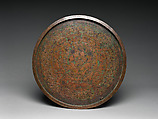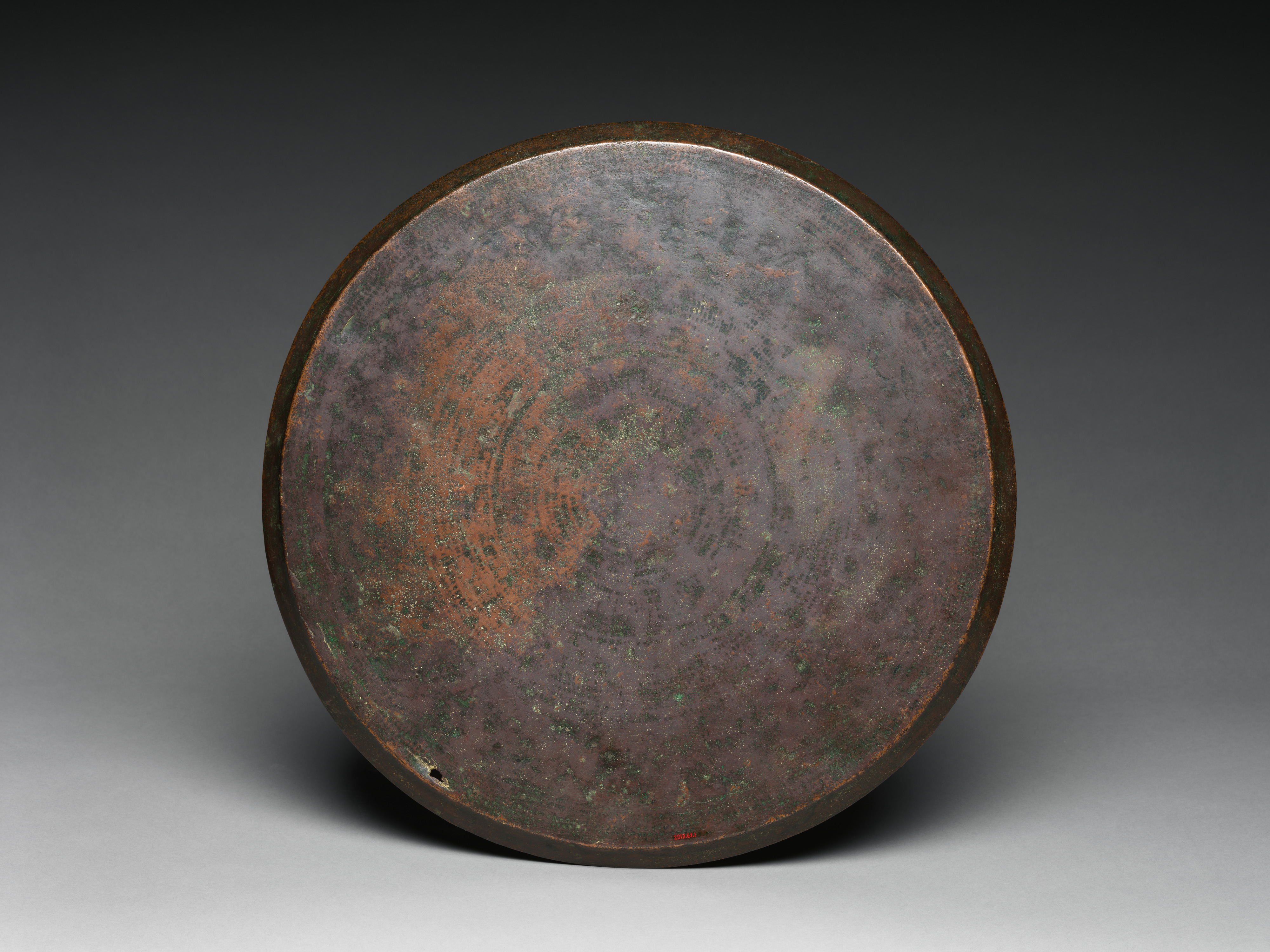Offering tray (talam)
Not on view
In medieval Javanese Hindu ritual, large metal offering trays were regularly employed for the preparation of ritual utensils and paraphernalia. The term used in Old Javanese is tahas, and they are referred to in modern Javanese and Indonesian as talam. Both variant terms can be sourced to the Tamil word for the same utensil, tattam. Fragmentary bronze trays of this type, together with other metal temple utensils, have been excavated from a mid-10th century shipwreck in the Java Sea in the past decade, affirming their antiquity. The traditions and ritual practices of Central Java (8th to 10th century) were largely preserved in the following centuries in the Hindu-Buddhist centres of East Java, up to the coming of Islam in the 15th century.
This offering tray has a pronounced raised rim and engraved designs on the interior. In the center of the décor is a diamond surrounded by bands of decoration beginning with solar radiate prongs, encircled by openwork vegetal patterns, and finally a denser vine and floral meander.
This image cannot be enlarged, viewed at full screen, or downloaded.
This artwork is meant to be viewed from right to left. Scroll left to view more.



